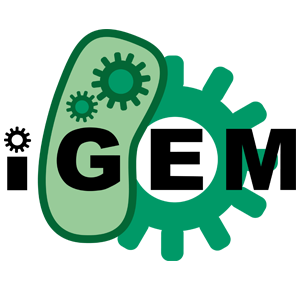Team:UiOslo Norway/Safety/Ethics
From 2014.igem.org
Ethics and Concerns
Ethics in Biotechnology - Concern and issues
There are many concerns that arise with new technology. It can be new treatments, better solutions, and new knowledge with the intention to benefit human society or our environment. But as technology advances, so does its complexity. Issues and concerns have been raised about how technology may be misused in any form, may it be intentional or by accident, or of scientific information being withheld or wrongly presented. These matters are therefore important to discuss.
Questions of technology also apply to biotechnology. The use and alteration of organisms for production and for research have been and still is of debate. With the growing complexity of the field, there are many apprehensions about the publics’ level of knowledge and how capable they are to understanding the ethical problems that lies within this field. However in recent years there has been a much bigger focus on making research transmittable to a broader audience as we have tried doing so for our human practice.
Through this page we hope to illustrate some concerns and issues that have formed the field of bioethics and how ethical and moral implications of biotechnology are being addressed at different governmental levels. We will also talk our iGEM project’s bioethical subjects that may surface due to future prospects (see: Prospect for the Future).
Bioethics as a discipline (Willmott, 2011)
There are no real definitions of what bioethics entails nor is there a clear cut to where bioethics starts and where it ends. However when the term as first used by Van Resselaer, an American cell biologist it was described as “a new discipline which combines biological knowledge with a knowledge human value systems”.
Bioethics can loosely be divided into three categories; biomedical ethics, environmental ethics and research ethics. For our project the category referred to as research ethics will be of the bigger relevance as it is significant to be able to relay science in a proper way.
In research ethics there are six main problems that can have major implications. These are:
- Not telling the whole story
As in withholding information, usually negative fallouts when publishing research results.
Example: Not revealing results from clinical studies that have a negative outcome for the hypothesis which could be the expected or unexpected effects of a for example of new drug substance.
- Exaggerating the story
By either letting on more than what is actually true or enhancing the results by implying the results are greater than they are.
- Repeating the story
As in using the same material and results several times to substantiate a hypothesis.
- Plagiarizing (Telling someone else’s story)
Plagiarizing means to use the work of others and claim it as your own. This can be done both deliberately and unintentionally.
- Telling another story all together
As in tell a story that is neither the story to be told nor a story agreed upon by all parties.
A good example is: We had an interview with our student newspaper called Universitas. For this article we were talking about iGEM, and our work. However when the article was released it was titled "Frykter bioterror trussel". In English this title means "Fearing bioterror threat". (See: Media)
- Conduct unbecoming
This problem is very rare and most institutions have a code of conduct upon which the employees, students and others associated with the institutions are obligated to follow.
No matter how tempting it is to commit these types of wrongdoings, the repercussions for oneself and the research community are enormous.
Therefore the keyword in research ethics should be transparency. It is through transparency and cooperation that these problems no longer pose a threat to the research environments credibility. As we, the UiOslo_Norway team have tried to do. Yet, when transparency can lead to misunderstanding and false accusations, the ethical reasoning behind transparency start to diminish.
Ethics in synthetic biology (Deplazes et al., 2010)
First it’s important to define what a GMO is when we talk about bioethics. This is a term that has been used many times, also in contexts where terms such as substance modifications would have been better. GMO stands for Genetically Modified Organism and had been heavily debated for more than 20 or so years. The use of GMO has been especially controversial when it comes to its use as food for human consumption.
Here we can divide the ethical problems into three sections.
Ethical problems within synthetic biological methods. There are also questions dealing with the application of synthetic biology and those dealing with the distribution.
The distributional questions are related to IPR which stands for intellectual property right and open assess and the global socioeconomical effects of synthetic biology, as these problems are more ready being talked about unlike during the GMO debate.
The iGEM competition has an open access norm for almost all of it tracks except for perhaps Entrepreneurship track. This will of course apply if the teams in this track are to protect their intellectual property right in form of a patent.
Regulations – How are ethical issues being addressed?
Within the European Union (EU) the ethical issues are addressed:
There are Council Directives by the Council of the European Union on the contained use of genetically modified micro-organisms (90/219/EEC) and on the deliberate release into the environment of genetically modified organisms (90/220/EEC).
In Norway:
The Norwegian Gene Technology Act (Lov om framstilling og bruk av genmodifiserte orgamismer m.m. – Genteknologiloven) governs “the use and production of genetically modified organisms and cloned animals within an ethical and socially acceptable way in regards to the principle of sustainability and without any damage to health and the environment”. This act has several regulations and these regulations further elaborate the restrictions and usage of GMOs and others that the act applies to.
The University of Oslo’s safety and risk procedures are based on The Norwegian Gene Technology Act and its regulations.
Ethical concerns regarding our microOrganizer project
Let’s look at how the future of the micrOrganizer can fit into the three sections stated in a previous paragraph. Our project could fall into methods and application types of ethical issues. First being the bacterial organ concept which could be viewed as artificial organisms creating an artificial organ. As bacteria are living things with its own capability to propagate and have always existed naturally, it interpreted as strange to be bending the “rule of nature” and thus a conflict in our value system can occur. Some may argue that GMOs are also altered to bend to human needs, synthetic biology takes it even a further making it so that humans can create organisms we can “fully” control. Biocomputing, being another application that can have implications on how we think about machines. Since the emergence of synthetic biology the line that separated livings things from machines have gotten much more burred.
For waste degradation applications it means that MicrOrganizer needs to be either used in a controlled space where risks for scattering are limited or it needs to be released into the locations that are polluted were the risks are great as a bioremedial. For the latter the threat of such a problem can eliminate by creating a death mechanism in the system that hinders spread outside the polluted area. A death mechanism in itself can be of discussion. Living biomaterials as an application will also be capable of encountering the same types of problems.
Conversely, at the current moment there are not many ethical questions about our project by itself that needs to be deliberated at it is at a proof of principle stage. There is still a need to view the general concerns when it comes to “playing with living organisms”.
Through communication, and dialogues, one may be able to reduce the doubts and fears that comes with statements GMOs and by extension synthetic biology.
Hence it is important that the public knows that there are restrictions on what type of research can be conducted and specific permissions are need to conduct research within different levels (for microorganism there are four different levels ) from the authorities.
References
DEPLAZES, A., GANGULI-MITRA, A. & BILLER-ANDORNO, N. 2010. The Ethics of Synthetic Biology: Outlining the Agenda. In: SCHMIDT, M., KELLE, A., GANGULI-MITRA, A. & VRIEND, H. (eds.) Synthetic Biology. Springer Netherlands.
DEPLAZES, A., GANGULI-MITRA, A. & BILLER-ANDORNO, N. 2010. The Ethics of Synthetic Biology: Outlining the Agenda. In: SCHMIDT, M., KELLE, A., GANGULI-MITRA, A. & VRIEND, H. (eds.) Synthetic Biology. Springer Netherlands. WILLMOTT, C. J. R. 2011. Bioethics. Effective Learning in the Life Sciences. John Wiley & Sons, Ltd.


 "
"

